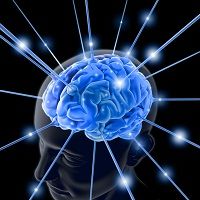Article
Forget Opioids, Placebo Provides Pain Relief Even When Revealed to Patients
Author(s):
Merely being told that a treatment has analgesic effects may be all that a patient needs in order to experience pain relief, a new study suggested.

Merely being told that a treatment has analgesic effects may be all that a patient needs in order to experience pain relief, a new study suggested.
A team from the University of Colorado Boulder (CU-Boulder) analyzed how conditioning the brain to believe it is receiving a pain relief treatment, despite the fact that it’s not, can produce analgesic effects.
“We’re still learning a lot about the critical ingredients of placebo effects. What we think now is that they require both belief in the power of treatment and experiences that are consistent with those beliefs,” Tor Wager, senior author and associate professor at BU-Colorado, said in a news release.
The analysis included 54 participants from the ages 18 to 55 who were randomly assigned to receive either a placebo and control topical cream for short-term (one day) or long-term (four days). Although the treatments were the same, the subjects were told that the placebo had an analgesic component. They rated pain during high and low temperature stimulus using the 100-point VAS.
The findings indicated that the placebo provided greater pain relief when compared to the control. Furthermore, the long-term group showed more improved pain levels. Even after the participants were informed that the creams did not have pain relieving properties, the analgesic effects continued. Pain ratings did climb, however, by an insignificant amount.
“After the learning has occurred, your brain can still respond to the placebo even if you no longer believe in it,” said lead author Scott Schafer, a graduate student at CU-Boulder.
An average of four treatments were needed to condition the brain, according to the results published in The Journal of Pain. The patients believed that they were experiencing pain relief due to the treatment; however, the expectation of effectiveness appears to be key in analgesia even if the treatment does not.
“We know placebos induce the release of pain-relieving substances in the brain, but we don’t yet know whether this expectation-independent placebo effect is using the same or different systems,” Schafer explained.
With more 259 million prescriptions being written to Americans in 2012 alone, this discovery could pave the path for new methods for relief.
“If a child has experience with a drug working, you could wean them off the drug, or switch that drug a placebo, and have them continue taking it,” Schafer suggested.





